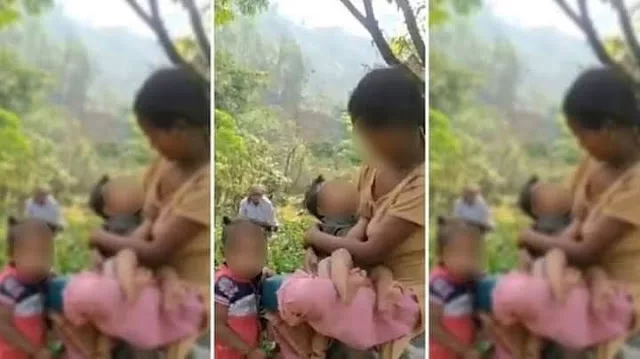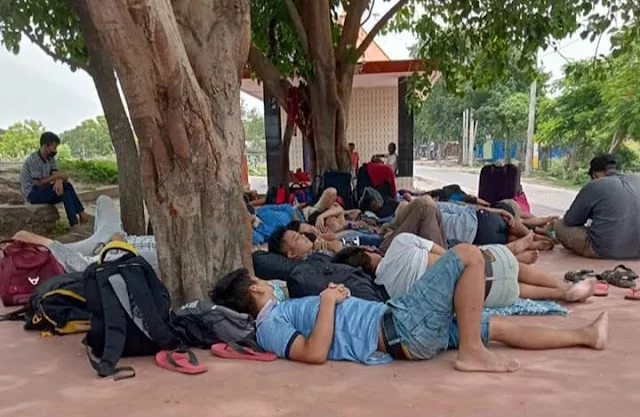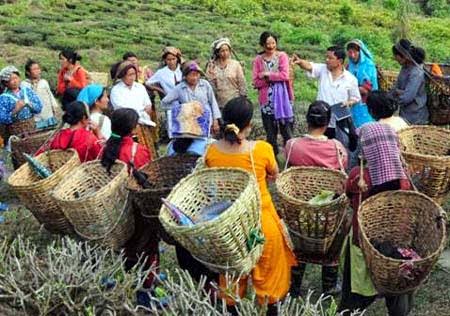 |
| Darjeeling the Queen of the Hills |
Gorkhaland
Nationalism does not appear to prevail around these parts, but regionalism is evident. A permit is needed to enter Sikkim, a reclusive kingdom sandwiched between the very north of West Bengal and southwest China, and located so close to Darjeeling it can be viewed from the vast Ging Tea Estate on the northeast side of town. India and China have long disputed Sikkim; a 1971 documentary on the territory directed by Satyajit Ray was immediately banned by India for fear of stoking secessionist demands, though the Ministry of External Affairs belatedly consented to its release in 2010.
Every country must sate demands for regional autonomy from within its borders, and in this respect India is more troubled than most. The people of the Darjeeling hills are predominantly Gorkha (or Gurkha) in ethnic origin, and they are demanding a level of independence similar to that won by Sikkim.
I had already noticed the horizontal green, white and yellow tricolour flag of Gorkhaland, defiantly displayed above front doors and in shop windows. The region crosses over into the eastern Nepal highlands, and generations of men on both sides of the border have been conscripted into specific brigades of the British and Indian armies, and roundly commended for their incredible courage. Now the Gorkhas are fighting on the home front, and asking India for something back in return.
The latest round of protests in August was triggered by the Indian government’s decision to grant limited statehood to Telangana in the restive south of the country. As I write this, the Gorkhaland Joint Action Committee has suspended all further action in deference to an appeal by the home minister in Delhi for talks. Nobody can say for sure where the movement will end. The Gorkhas are passionate about their cause, and now some are prepared to pay the ultimate price; like their oppressed neighbours in Tibet, self-immolation is becoming a protest of last resort.
To a casual visitor, there was little sense of impending insurgency. I spent several peaceful afternoons sitting on my guesthouse balcony overlooking the valley, while tuned into the first Ashes Test match from Nottingham and waiting more in hope than expectation for the clouds to part and the sun to break through. Between the commentary, children’s singing drifted up the hillside from the school below. Townsfolk passed by underneath on their way to market, or the temple. Above me, the tea houses and souvenir shops facing off around Chowrasta – the main square – did a brisk trade, despite the inclement conditions. Guided donkeys led excited children back and forth.
Tourist town
The beauty of Darjeeling is not all that can be seen and experienced; a chief attraction is also its raison d’etre. The Queen of the Hills has always been a tourist town, a magnet to the rich folk of Kolkata who need an escape from the overbearing mid-summer heat of the West Bengal plains. For them for decades, a retreat to the cooling mountain air of the Lesser Himalaya has been an irresistible draw. For the foreign tourists, this means they need not feel conscious of commercialism, development or exploitation. The Bangalis have done all this already.
Consequently, the hill station is overrun with hotels, restaurants, souvenir stalls and tour operators, but these are an integral part of the townscape, rather than a distasteful addition to it. They pile up on top of each other as “Darj” drops from an altitude of over 7,500 feet to under 6,900 feet in the space of a few streets.
Distinctly out of step with its surroundings, yet a home away from home for more than mere outsiders, is Joey’s Pub. Tucked away at the bottom end of town, it is as close to a traditional English inn as I have experienced since leaving home; more authentic, certainly, than The Big Ben bar concealed inside the Kenilworth Hotel in Kolkata.
Joey himself is unquestionably local, but his spiritual home must have been London’s Carnaby Street during the swinging 60s, such is the state of his music taste, haircut and attire. A flatscreen TV in the corner was playing a “Best of the Sixties” music DVD on a loop, featuring The Beatles, Kinks, Rolling Stones, Yardbirds and others. Joey never seemed to tire of it, or his punters of him.
I left after only two pints. I might have stayed longer, but the one kilometre walk back to my guesthouse was all uphill, and I wanted to be sure of making it in the straightest possible line. Outside the evening monsoon rain was torrential; water was cascading down the street and lashing into my face. I broke into a brisk jog but doubled up in exhaustion after only 30 yards, palms placed on knees, lungs gasping for air like an over-filled vacuum cleaner. It was then that I remembered I was attempting to run uphill, fuelled only by alcohol, at 7,000 feet.
In Darjeeling, it is not only the sweeping views that can take your breath away.
Courtesy: The Dhaka Tribune





